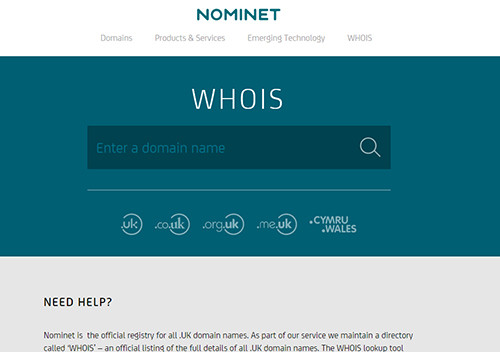Online retail sales alone in the UK are set to reach £52.25bn by the end of the year, and although the rise in online businesses is great news for the UK economy, it also means we’re experiencing a rise in cyber crime as hackers get increasingly savvy.
Whether it’s a competitor wanting to harm a company, an ex-employee holding a grudge, or even a hacker pointing a website elsewhere to make money or even bribe someone, there are many reasons why a website might be compromised.
One of the biggest issues brands are currently facing is domain hijacking. Unfortunately, it can happen to anyone; Microsoft and Google are two big names that have been caught out, so it’s about time everyone got clued up on how to protect themselves.
How your domain can be taken over
As you already know, when a domain name is registered, the owner (normally the business owner) has full control of it through the domain’s control panel. From the stage of registration, the domain name is pointed to the part of the web where the website’s data is hosted – its content, web pages, and scripts, for example.
For a domain to be hijacked, a hacker needs to get hold of the domain registrar name and the administrative email address associated with it. This can be easily found through the WHOIS data of the domain, if the domain isn’t registered privately (which they more than often aren’t). The email address is then hacked, and control of the account can be taken by resetting the login details. After this the domain can be pointed to different web servers, redirecting traffic to wherever the hacker pleases.
How can this affect a business?
In a matter of minutes a business can lose its website, potentially its reputation, and a whole lot of revenue. Not just this, but for digital marketers, tactics like PPC campaigns can be sabotaged too, meaning a business could be paying for clicks through to a website domain that they no longer own or benefit from.
When a hijack happens, the hacker can redirect traffic wherever they please. Usually this will be away from your website and to one that looks identical to fool your customers, or to a different website completely. Whether the aim is to tarnish your reputation, trick your customers, or make money from your business, the repercussions could be serious.
So your website has been hijacked, what now?
There is one organisation in the domain name world in particular that you should familiarise yourself with if you haven’t already. Not just in case you fall into trouble with hackers, but for any issues you might run into that affect your domain. Although your registrar will be clued up, for your own piece of mind it’s worth getting to know some of the processes yourself.
The entire domain name system (DNS) was designed to make the internet accessible to human beings, giving websites names like 34SP.com for example, as opposed to a sequence of numbers that can be a struggle to remember. This means that IP addresses can be changed successfully within 24 hours. So if you are aware of the organisations that can help you with this if you ever need it – you will know who to turn to.
ICANN (internet corporation for assigned names and number) is one of the most important. The not-for-profit corporation is dedicated to keeping the internet secure; and they have put processes in place for registrars to help them deal with issues like hijackings.
The need to be vigilant
It isn’t surprising that businesses feel concerned about their website and domain’s safety, with news stories cropping up all the time about brands that have come under threat. However, although there are laws in place that can return their domain if it’s ever hijacked, it’s important not to be lazy, and be vigilant in your attempts to protect it. Your domain could be everything to your business, so it’s really important you take steps to look after it.
